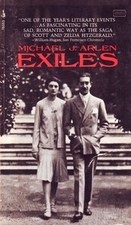
Leanne Phillips wrote to alert me to her September 2020 piece in the Los Angeles Review of Books on Ghosts on the Page: Alice Cary’s “Hagar: A Story of To-Day” and Other Lost Books. In it, she offers some interesting examples of “ghosts” — “Books that quickly fell out of print and into obscurity.”
These include Sanora Babb’s Whose Names Are Unknown, shelved in 1939 by Bennett Cerf at Random House for being too similar to The Grapes of Wrath — which wasn’t surprising, since Steinbeck had used Babb’s own Farm Security Administration notes as a source. Babb’s novel only saw the light of day in 2004 thanks to the University of Oklahoma Press. Another was Margaret Brown Kilik’s novel The Duchess of Angus, about the lives of women in San Antonio, Texas during World War Two. Discovered by Kilik’s step-grandmother, Columbia professor Jenny Davidson, in 2017, it only came to print in 2020 with the help of Trinity University Press.

Perhaps the most intriguing on the lot is Helen Adam’s 1935 novel Tough Little Trollop, which is about as obscure as a book can be without ceasing to exist. I didn’t bother linking the title to anything because there are no copies for sale and only two (!) library copies listed in WorldCat. Issued from the short-lived Hartney Press, which specialized in pulp Westerns, mysteries, and romances, the book was at least widely reviewed, though opinions were mixed. The Chattanooga News said it was “just tawdry.” The Minneapolis Star-Tribune called it “the best of its type” since Viña Delmar’s bestseller Bad Girl (which is supposed to be forthcoming from the British Library’s Women Writers series).
Variety’s reviewer thought it was “one of those over-sexed yarns concocted for library [meaning commercial lending libraries — decent public libraries didn’t shelve much pulp product in those days] readers,” but acknowledged, grudgingly, that “Trollop is more than that, though it is a story of sex rampant. Not classic literature, but decidedly a work of promise.” (Bear in mind that in the same issue of Variety, Willa Cather’s Lucy Gayheart was called “crude and amateurish” and both Horace McCoy’s They Shoot Horses, Don’t They? and Charles G. Finney’s The Circus of Dr. Lao were deemed “Not screen material,” though went on to be filmed in the 1960s.)

Phillips focuses on Alice Cary’s 1852 novel Hagar: A Story of To-Day. Published just two years after The Scarlet Letter, it offers a mirror to Hawthorne’s classic tale of adultery. Cary’s heroine, Elsie, is seduced by a clergyman and then abandoned. Elsie’s child dies at birth and she eventually takes on a new name, Hagar, and becomes a housemaid. She ultimately has the satisfaction of seeing the Reverend being carried off to the madhouse in a cage. The book was not well-received — one feminist paper, The Una, found the book “had no aim or purpose but to give utterance to sickly, morbid fancies” — and was largely forgotten until Nina Baym and other scholars began digging into the backlists of 19th century American women novelists.
In her 2000 book, Dreaming Black/Writing White: The Hagar Myth in American Cultural History, Janet Gabler-Hover shows that there were at least thirteen Hagar novels –all by women — published between 1850 and 1913. In fact, the number of Hagar novels is enough that some scholars (including the usually meticulous Baym) became confused and credited Cary’s novel to Harriet Marion Stephens. Stephens’ novel, however, was titled Hagar the Martyr (1855). All drew upon the Biblical story of Hagar, the Egyptian (and therefore, Gabler-Hover argues, black) servant that Sarah tells to sleep with her husband Abraham and who bears the child Ishmael. These novelists, she writes, “probably selected Hagar because they wished to write novels exceeding the boundaries of the woman’s domestic novel in mid-century America.”

I’m intrigued by Stephens’ Hagar the Martyr. Its full title was Hagar, the Martyr; or, Passion and Reality, A Tale of the North and South. According to Gabler-Hover, Stephens, an actress of mediocre reputation, wrote the novel “pseudoauto-biographically, using the revenge aspect of the heroine to target theatre socialites who she imagined (probably rightly) had shunned her. The story starts in the antebellum South, where the girl Hagar is alleged to be the illegitimate child of a quadroon slave and her father, Alva Martin. Laird, a Southern gentleman of ungentlemanly ways, threatens to take her as a mistress and, after Hagar makes her way to the North and makes a name for herself in Boston society, re-emerges to assert his right to seize her as a slave.

In words that seem a 19th Century version of Tough Little Trollop’s reviews, a proper journal such as The Living Age wrote indignantly of the novel,
The name of a woman on the title-page of a book is generally considered fair security for its freedom from gross faults of principle, if not of style. With this impression, we took up the story of Hagar, and — found ourselves mistaken. It were charity to suppose the author subject to occasional fits of mental aberration while guiding her pen. No reader of refined taste will proceed far in a book whose violations of probability and sins against good style are only exceeded by its recklessness of propriety.
Harper’s reviewer, more charitably, found Hagar the Martyr “a story belonging to the school of melodramatic intensity, written in a bold, dashing style, and seeking the materials for popular effect in scenes of strange and high-wrought passion.”
Both Hagar: A Story of To-Day and Hagar the Martyr are available on the Internet Archive.












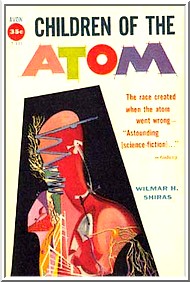 The last shows that Walton’s kept a discriminating filter on her list. Of Steig Larson’s novels, which someone nominated, she writes, “These are a stupendously successful non-genre best sellers. The opposite of obscure.” I’ve seen them on the end caps of airport bookstores in Belgium, Spain, the U.K., and the U.S. in the last two months: definitely NOT neglected.
The last shows that Walton’s kept a discriminating filter on her list. Of Steig Larson’s novels, which someone nominated, she writes, “These are a stupendously successful non-genre best sellers. The opposite of obscure.” I’ve seen them on the end caps of airport bookstores in Belgium, Spain, the U.K., and the U.S. in the last two months: definitely NOT neglected. tells the story of a confrontation between whites and Native Americans to which neither journalism nor scholarship could possibly do justice. The novel takes place in South Dakota in the 1970s, when local developers start the short-lived Bones War while building a golf course on an ancient burial ground. The American Indian Movement is at its height, government authorities feel under constant siege, the U.S. appears on the verge of living up to its ideals or of falling flat on its face; Michael Doane uses this real-life civil strife to illuminate the individual troubles, and principles, such rebelliousness brings to the fore….
tells the story of a confrontation between whites and Native Americans to which neither journalism nor scholarship could possibly do justice. The novel takes place in South Dakota in the 1970s, when local developers start the short-lived Bones War while building a golf course on an ancient burial ground. The American Indian Movement is at its height, government authorities feel under constant siege, the U.S. appears on the verge of living up to its ideals or of falling flat on its face; Michael Doane uses this real-life civil strife to illuminate the individual troubles, and principles, such rebelliousness brings to the fore…. 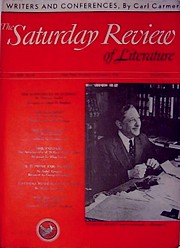 Thumbing through issues of
Thumbing through issues of 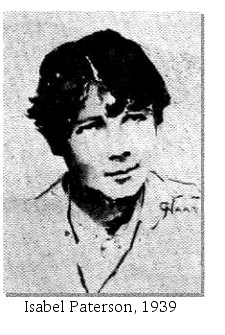 Possibly so; and it may be my fault that they don’t seem to notice there was no way for him to behave well. He had only a choice of behaving badly in different ways. What I mean is that like is like that. Many of the most admired moral examples really will not stand close and logical examination. It is so in the nature of things. Human beings are inevitably in an appalling predicament between their emotions and their obligations; the two elements are not even conveniently distinct, but inextricably snarled in a cat’s-cradle. And the more you try to untable it the worse it becomes.
Possibly so; and it may be my fault that they don’t seem to notice there was no way for him to behave well. He had only a choice of behaving badly in different ways. What I mean is that like is like that. Many of the most admired moral examples really will not stand close and logical examination. It is so in the nature of things. Human beings are inevitably in an appalling predicament between their emotions and their obligations; the two elements are not even conveniently distinct, but inextricably snarled in a cat’s-cradle. And the more you try to untable it the worse it becomes.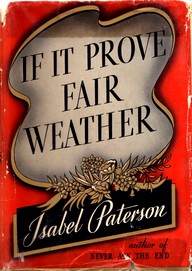 He married twice. The first time, he was undecided between two sisters. His personal preference was for the younger and prettier of the two; one may assume he was in love with her. But out of sheer altruism, he felt it would be invidious to leave the elder and plainer sister slighted. So he married the elder. It is not known whether the younger was in love with him. She might have been. He was a man of charm, wit, and general attractiveness. And if the younger girl was in love with him, I can’t make up my mind–I am very fond of him–which of the two girls had the best right to murder him on the spot. Both of them, in my opinion, had every right to do so. He had injured the girl he loved and insulted the one he married.
He married twice. The first time, he was undecided between two sisters. His personal preference was for the younger and prettier of the two; one may assume he was in love with her. But out of sheer altruism, he felt it would be invidious to leave the elder and plainer sister slighted. So he married the elder. It is not known whether the younger was in love with him. She might have been. He was a man of charm, wit, and general attractiveness. And if the younger girl was in love with him, I can’t make up my mind–I am very fond of him–which of the two girls had the best right to murder him on the spot. Both of them, in my opinion, had every right to do so. He had injured the girl he loved and insulted the one he married.  Gold lived in the same apartment building during one of the worst periods of Cheever’s life, when he was drinking himself to death during a teaching gig at Boston University. Gold, whose drinking problems were slightly more manageable than Cheever’s, had released a short story collection,
Gold lived in the same apartment building during one of the worst periods of Cheever’s life, when he was drinking himself to death during a teaching gig at Boston University. Gold, whose drinking problems were slightly more manageable than Cheever’s, had released a short story collection,  Cheever met Kentfield during a stay in Hollywood in 1959 and the two men had a brief, intense affair that left Cheever paranoid about his homosexual feelings. Kentfield was a former Merchant Marine sailor whose most successful novel,
Cheever met Kentfield during a stay in Hollywood in 1959 and the two men had a brief, intense affair that left Cheever paranoid about his homosexual feelings. Kentfield was a former Merchant Marine sailor whose most successful novel, 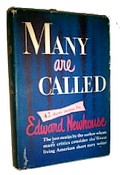 Newhouse, who was born in Hungary, started out as a radical novelist whose 1934 novel about the down-and-out,
Newhouse, who was born in Hungary, started out as a radical novelist whose 1934 novel about the down-and-out, 